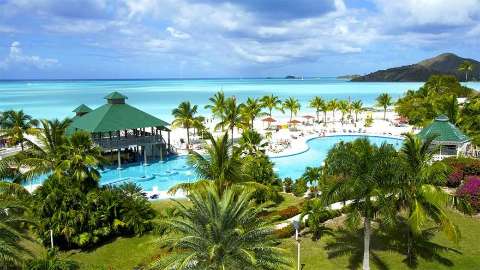(Observer)As proven by the mass appeal of our “sun, sea, and sand”, the Caribbean stands as the most tourism-dependent region in the world. In 2019, tourism accounted for 14 percent of the Gross Domestic Product (GDP) in the Caribbean – the highest share of any region in the world, with a 33.2 percent increase in 2022.
Research shows that over 7 million stop-over visitors and 17 million cruise ship passengers are estimated to visit the Caribbean annually [1], contributing a figure of up to 70 percent of the Gross Domestic Product within individual islands [2]. This makes the sector a key source of foreign exchange earnings for Caribbean economies. Prior to the pandemic, employment insights from 2019 revealed that countries like Antigua and Barbuda, and Saint Lucia, tourism directly and indirectly accounted for 91 percent and 78 percent of all employment respectively. These insights covered related industries such as accommodation for visitors, food and beverage, passenger transport, transport equipment rental, travel agencies and other reservation service activities, as well as cultural activities, and sports and recreational activities. [3] The lucrative nature of the sector benefited many economies of the region for what seemed to be time without end – then came a sudden disruption.
The nature of the virus necessitated a suite of safety measures ranging from curfews, restrictions on mass gatherings, closures of institutions, and even national lockdowns, having a direct impact on the economies within the Caribbean as seen through the sharp increase in unemployment rates, along with states generally struggling to provide social assistance to their citizens.
With travel grinding to a halt, there was the inevitable plunge in tourism in the region, with arrivals falling by 67 percent in 2020 due to the initial shutdown on international travel.[4] It was also reported that the Caribbean had an estimated loss of more than 2 million jobs in 2020 due to the pandemic, many of them within tourism.[5]
Although our leaders have paid attention to the economic shocks that the pandemic has produced, it is also important for us to view these shocks at the micro-level. When we think about tourism, we tend to limit our scope to the economy and our state, when it is much more than this. As shared by the owner of excursion company Creole Antigua Tours, “zero tourists, means zero income” – capturing the harsh reality of tourism dependency and our hopelessness without it.[6] Another potentially detrimental factor which is overlooked within the region is the gendered impacts that exist within the sector. Women have been reported to make up a significant percentage of the tourism workforce, with their involvement reaching to as high as 62 percent in islands like Guyana.[7] To place this into perspective, larger amounts of women within the tourism workforce equate to larger amounts of women left unemployed during the pandemic. This becomes particularly concerning due to the prevalence of female headed households within the region, with previous statistics reporting an average of 35 percent of all households in the Caribbean being headed by women, and as much as 44 percent in Barbados [8], and 45.6 percent in Jamaica.[9] Taking this into account with the circumstances of Covid, unemployment and home isolation meant that women in the tourism sector who also headed households were faced with a double burden: financial instability, and the care of the household.
However, tourism workers in the region are not only facing unemployment and underemployment, but they are also combatting the challenge of limited alternative employment opportunities due to the lack of diversification in most Caribbean countries.[1] Although economic diversification does not come easy, it must be pursued to reduce the continuous reliance on one sector. When we consider that reports have revealed that tourism accounts for up to 90 per cent of direct and indirect employment for individuals within some islands, it presents a worrying visual of the severe level of dependency on the sector, with the pandemic further highlighting the truly volatile nature of tourism. Global factors like climate change have also led to a cause of concern based on the geographical location of the region and its susceptibility to natural disasters, with countries like Dominica facing an estimation of US$981 million in damages, and losses of another US$380 million after being hit by Hurricane Maria, accounting for 225 percent of the country’s GDP in 2016. [2] Since tourism primarily relies on the commodification of our natural resources, these impacts often demonstrate that our current economic model does not reflect the environmental vulnerabilities of the region.
Innovative approaches are needed to further our economies and Caribbean development. The impacts of the Covid-19 pandemic are now being seen as a catalyst for the long-overdue reconstruction of the mass tourism model in the Caribbean, leading to a call for greater importance of agriculture and food security, along with assessments of international markets to find gaps within our own economic models, and an overall identification of blue marine and creative economies as the potential blueprints for the future success and sustainable development of the region. Countries like Belize have already begun to expand their scopes through agribusiness, with manager at IPA Belize INVEST Generation stating, “We are lucky to have hectares of arable land, which makes agribusiness a viable alternative to tourism”. [3]
Without a doubt, the pandemic has amplified the volatility of tourism, and without the diversification of our economies the livelihoods of our people continue to be at stake.










